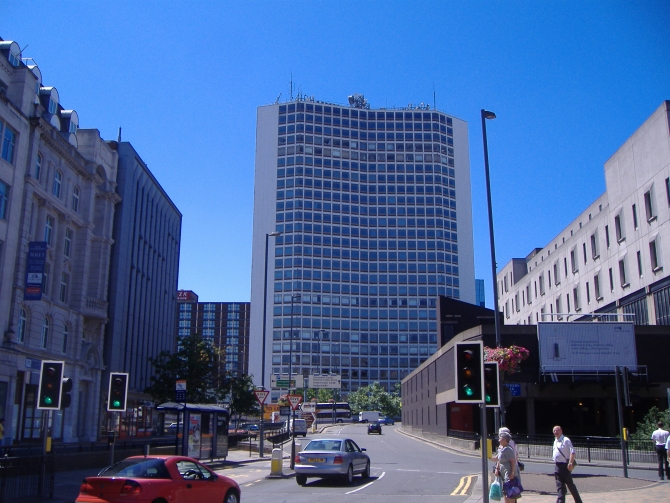In a move likely to dismay as many as it pleases, 14 office buildings designed in the post-war era have been awarded Grade II listed status.

The announcement was made yesterday, following an 18 month project by English Heritage, and includes office properties from towns and cities throughout England. Experts began with a list of hundreds of buildings dating from 1964 to 1984 and gradually whittled this down to a long list of 60 before making their final selections.
According to director of designation at English Heritage Roger Bowdler, the 14 properties finally awarded listed status are “remarkable designs, capable of years of commercially vibrant use” and clearly demonstrate their architects’ ability to respond to radical changes in the way we work.
He continued; “We are doing our duty to the future by identifying the very best examples of modern architecture. We are very picky. We are trying to give owners clarity about which buildings possess high levels of architectural or historic interest.”
Included in the list are four London buildings, making the capital the home of the highest number of newly listed commercial properties this year. 30 Cannon Street, Brown Shipley at Moorgate, the Civil Aviation Authority House (formerly Space House) and 1 Finsbury Avenue were all awarded the title.
Speaking about the latter building -designed by Peter Foggo of Arup Associates in 1982 – Geraint Franklin, who led the project, said: “It was a real paradigm shift. “It presages the Big Bang of stock-market deregulation with a new type of flexible working space, with raised floors and suspended ceilings.
“It also shows the architect’s role beginning to change, influenced by American commercial developments, concentrating on the ‘shell and core’ – designing a beautiful wrapper and key internal spaces, but leaving the rest to the client to fit out.”
Tim Roberts, Head of Offices at British Land, says that the building’s new status need not be restrictive to the owners: “The Grade II listing of 1 Finsbury Avenue has been arrived at after a constructive dialogue between British Land, English Heritage and the City of London Corporation.
“The rigorous and detailed analysis and assessment of elements contributing to the significance of 1 Finsbury Avenue means that British Land will have the flexibility to adapt the building to keep pace with the continued evolution of Broadgate as an exemplar of flexible and adaptable commercial place making.”
Outside London, Birmingham had two office buildings listed; St James’s House, designed by John Madin in the 1950s, and Alpha Tower (pictured), a concrete skyscraper built in the early 1970s.
“George Marsh’s powerful and elegant Alpha Tower has become one of Birmingham’s iconic landmarks and Madin’s thoughtfully considered St James’s House, with its strong design, careful detailing and clever interior perfectly reflected the particular needs of his client,” said Deborah Williams of English Heritage. “Both of these special buildings deserve to be listed.”
Leeds, Bristol, Liverpool and Newcastle are among other locations to have office buildings listed.
With Neil Bird